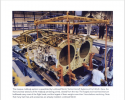Alternatively, fighter development is an extremely complex undertaking and weight creep is commonly seen in programs around the globe. The 611 Institute doesn't have to be incompetent or incapable to be forced into trade-offs that could result in a weight greater than the 'baseline' 21 tonnes. I'm not saying that this actually happened, just that it is not something that can be obviously ruled out.
I don't find imputation of negative motives, even without direct attribution, to be conducive to good faith discussion.
Thank you for the information (seriously).
This is what I wanted to discuss. In the absence of published technical data and specifications from China, how does one decide what to think about these issues?
Personally, I believe Chinese sources that have been proven to be credible, from forum insiders such as maya and pop3 to He Weirong (J-20 deadlines) and Ma Xiaotian (H-20 "soon"). On the other hand, Yin Zhou and Zhang Zhaozhong, both rear admirals, are well-known for often being wrong on TV.
When it comes to technical claims, it is indeed very hard to say anything without expertise and access to specifications. I don't assume that China couldn't be (isn't) ahead of the U.S. in some areas, and the number of these areas is sure to grow. However, there are claims that are hard to square with my understanding of things (model, if you like). For example,
- according to , an NRIET official said at Zhuhai 2016 that the AESA developed for the JF-17 has a range equivalent to the F-35's radar, achieved in a smaller volume radar;




